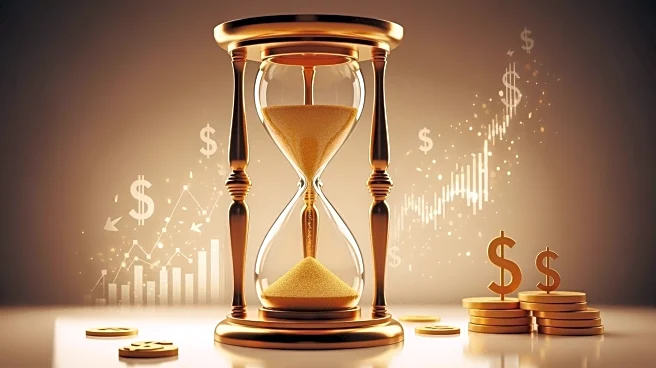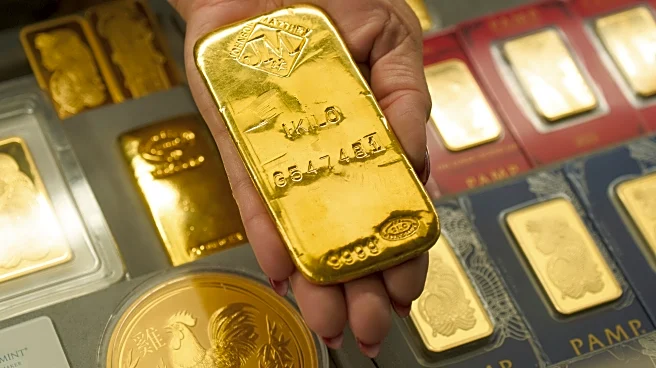What's Happening?
HSBC has raised its 2025 average gold price forecast to $3,455 per ounce, citing geopolitical tensions, economic uncertainty, and a weakening U.S. dollar. The bank projects that gold prices could reach
$5,000 by 2026, driven by sustained geopolitical risks, economic policy uncertainty, and rising public debt. Gold prices have recently hit a record high of $4,378.69, marking the biggest weekly gain since December 2008. The U.S. Federal Reserve's rate-cutting cycle is expected to support gold prices, although its impact may diminish as the cycle wanes. ANZ forecasts gold will peak near $4,600 per ounce by June 2026, followed by a gradual decline as the Fed concludes its easing cycle.
Why It's Important?
The forecasted rise in gold prices underscores the metal's role as a safe-haven asset amid global economic and geopolitical uncertainties. As investors seek stability, gold's appeal as a diversifier and hedge against inflation becomes increasingly significant. The potential for gold prices to reach $5,000 per ounce reflects broader concerns about economic policy and public debt, which could influence investment strategies and market dynamics. For the U.S. economy, the implications of rising gold prices may affect monetary policy decisions and investor sentiment, particularly in relation to interest rates and inflation expectations.
What's Next?
As geopolitical tensions and economic uncertainties persist, gold is likely to remain a favored asset among investors seeking security. The U.S. Federal Reserve's monetary policy decisions will be closely watched, as they could impact gold's trajectory and investor behavior. Analysts and investors will monitor developments in geopolitical risks and economic indicators, which could further influence gold prices. The potential for gold to reach $5,000 per ounce by 2026 will be a key focus for market participants, as they assess the implications for investment portfolios and economic stability.
Beyond the Headlines
The projected rise in gold prices highlights the broader economic challenges facing global markets, including public debt and policy uncertainty. As investors turn to gold for stability, the metal's role in financial systems may evolve, influencing asset allocation strategies and risk management practices. The interplay between gold prices and monetary policy decisions will be crucial in shaping economic outcomes and investor confidence. Additionally, the environmental and ethical considerations of gold mining may gain attention, prompting discussions on sustainable practices and industry standards.













